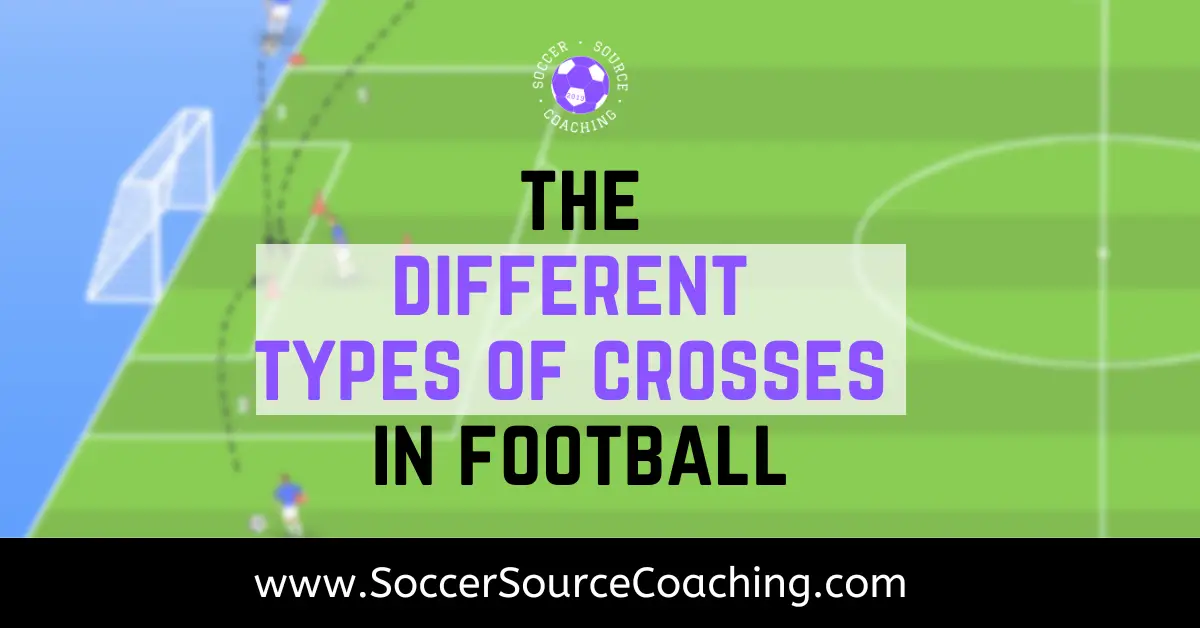In soccer, there are a variety of different crosses wide players can use to try and find their teammates in the opponent’s box. It can actually be an incredibly hard skill to master! This post will go over the different types of crosses in football so know which one to use.
These are the different types of crosses in soccer
There are 6 different types of crosses in football you can use when looking to cross the ball.
They are a:
- Low driven cross
- High driven cross
- Pull back cross
- Chipped (floated) cross
- Inswinging cross
- Outswinging cross
Below, I go into more detail on how to best utilize these different types of crosses in football
The Low driven Cross
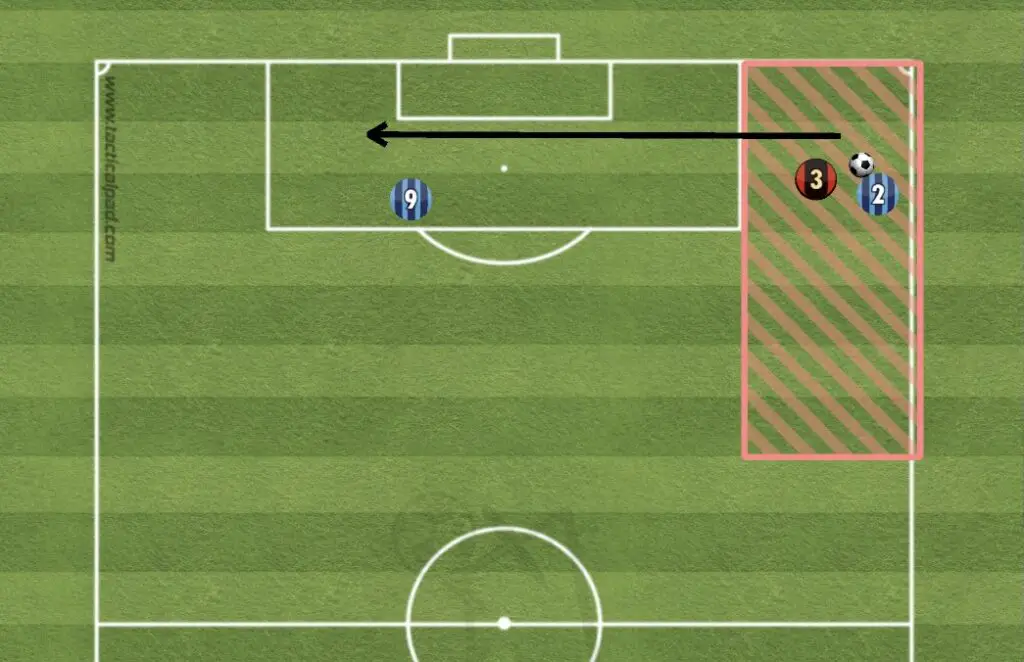
The low-driven cross in football is where the ball is played across the goal on the ground, between the penalty spot and the 6-yard box.
The best place to try and play the low-driven cross would be in the middle of the opposition goalkeeper and defenders.
This makes it very hard for the opposition team to defend.
It causes confusion and hesitancy between the goalkeeper and defenders.
The defenders are worried to block the cross in case they put it into their own net, with the goalkeeper uncertain whether to come out and collect the cross.
When the low-driven cross is executed and perfected it should leave the attacking teammate with a simple tap-in to score.
A player should use their laces to generate the power or a firm inside of the foot pass.
The high-driven cross
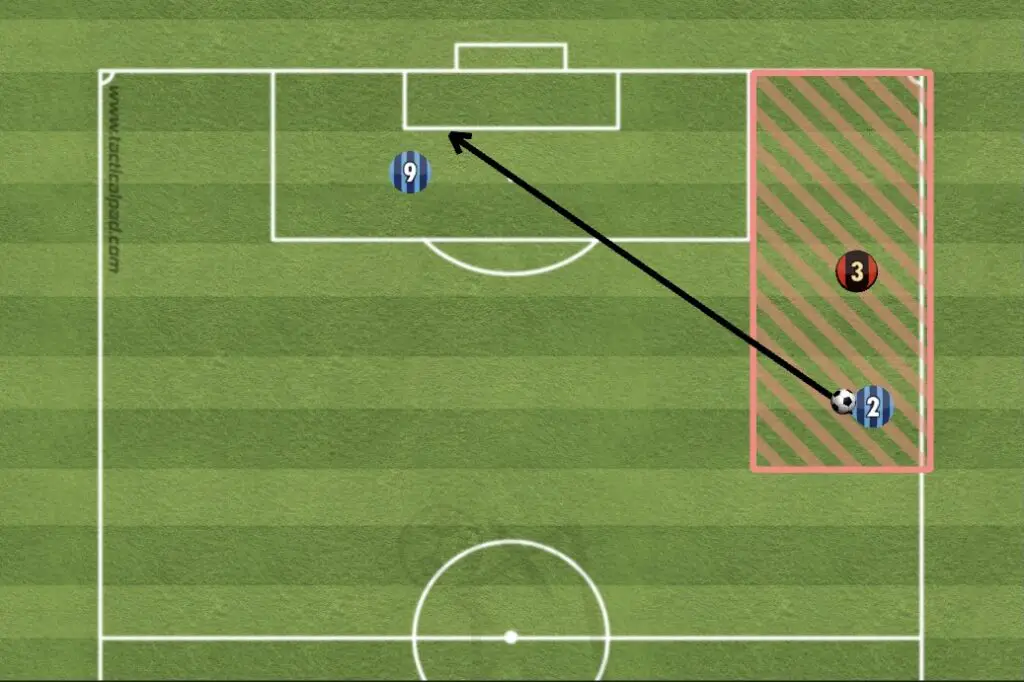
The high-driven cross in football is where a cross is played from a slightly deeper position, toward the back post in the air.
The player making the cross will use the laces to generate the power.
The purpose of the high-driven cross is to cross the ball to a player who is attacking the back post.
They can then have a shot on the goal or put it back across the goal for a teammate to attack.
This cross can be hard to defend as the opposition defenders are having to track the ball as well as watch the player that is running in from behind.
This puts the defender in a really awkward spot.
When playing the high-driven cross you need to make sure you are using enough power and height so it clears the first man, but not so much that you over-hit the cross
This type of cross in football would more commonly be used by a fullback.
The pull-back cross
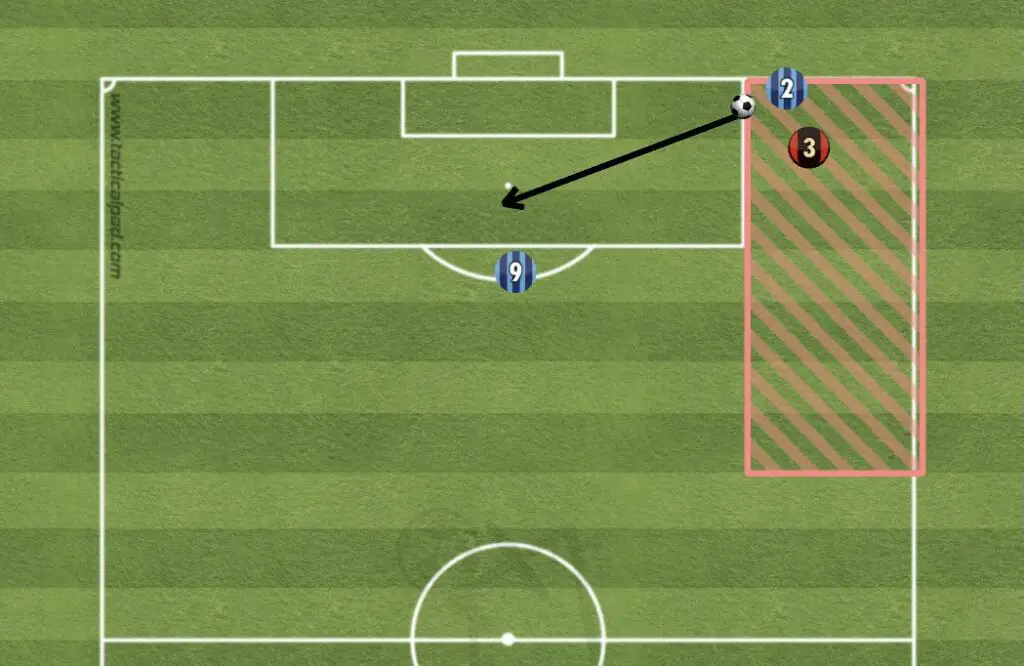
The pull-back cross in football is where the wide player has the ball and is running parallel to the goal line and passes the ball back to a player who is running onto the ball from a deeper position.
The purpose of the pull-back cross is to provide an easy shooting opportunity for a teammate who has a better angle to score from.
When playing this cross, the wide player would have typically managed to dribble past the opposition defender.
The wide player will then use the inside of their foot to play an accurate pass to their teammate who is running onto the ball.
The In-swinging cross in football
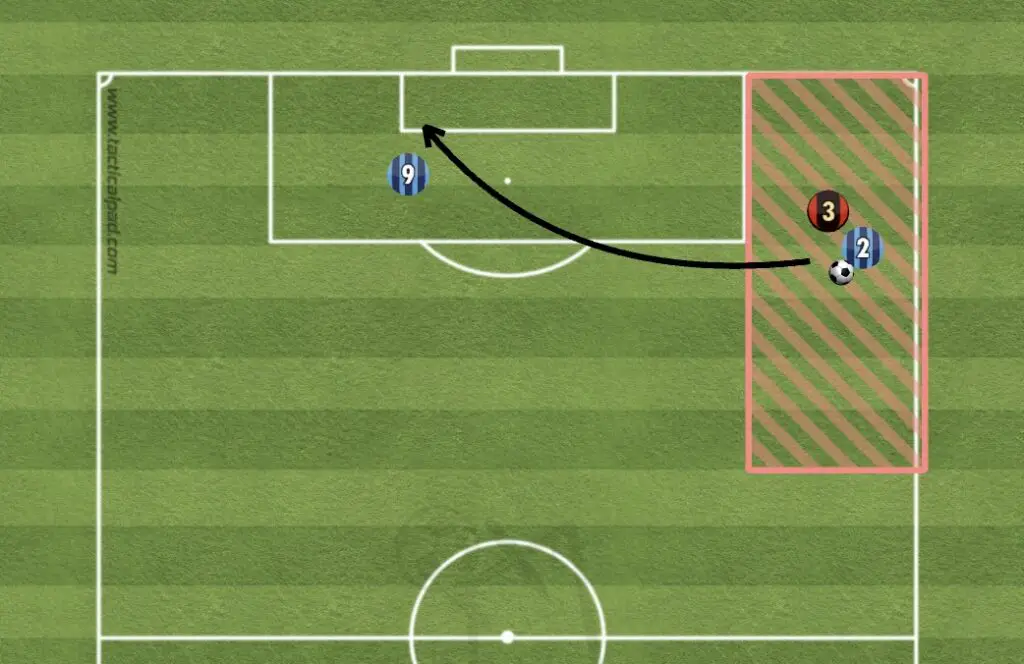
The in-swinging cross in football is where the wide player will cut inside and use the inside or outside of their foot to play cross into the box.
The technique of the kick will make the cross curve towards the goal, hence the name ‘In-swinging’.
An in-swinging cross will usually be played by a team who plays with inverted wingers or fullbacks.
This can be a hard cross to defend because the ball will always be moving away from the defender.
As an attacking player, this is a fantastic cross to attack because it is easier for them to judge and time their runs.
However, because the cross is curling toward the goalkeeper they may also find it easier to come out and claim the cross.
The Out-swinging cross in football
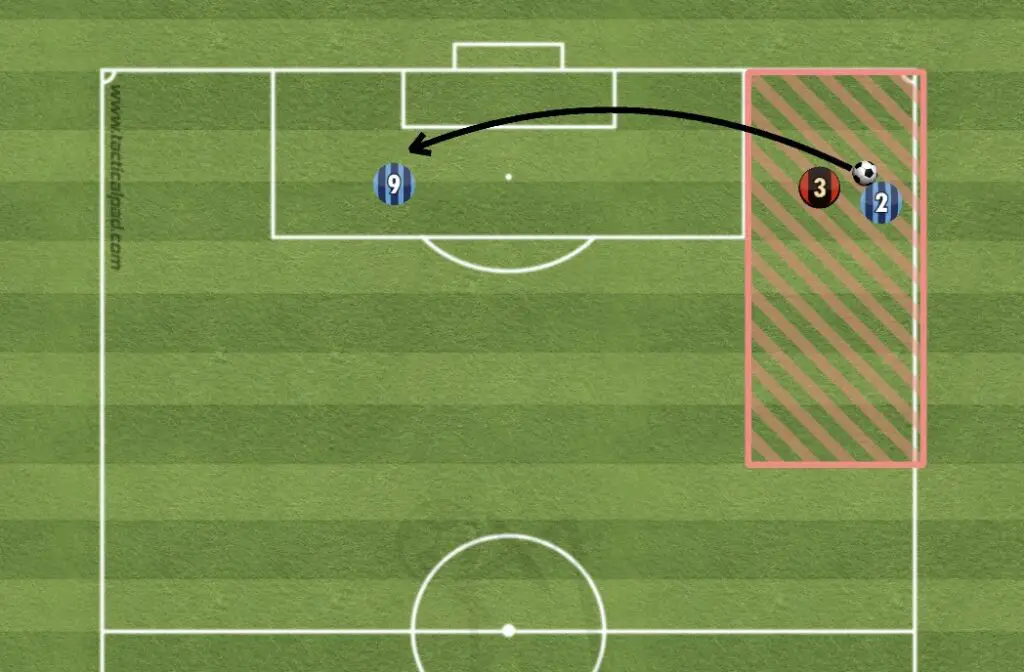
An out-swinging cross is the opposite of an in-swinging cross.
Instead of cutting inside the winger will go on the outside of the defender and cross using the inside or outside of their foot.
The technique used for this type of cross will make the ball curve away from the goal.
Hence the name ‘out-swinging’ cross.
This is the common type of cross you will see in a football game, as most teams will play with traditional wingers.
The wingers will tend to try and go down the outside of the fullback and cross the ball.
These crosses curve away from the goal and require the striker to adjust their run so they do not get caught under the ball or too far in front of the ball.
The goalkeeper will also find it hard to come out because the cross will be moving away from them.
The Chipped (floated) cross in football
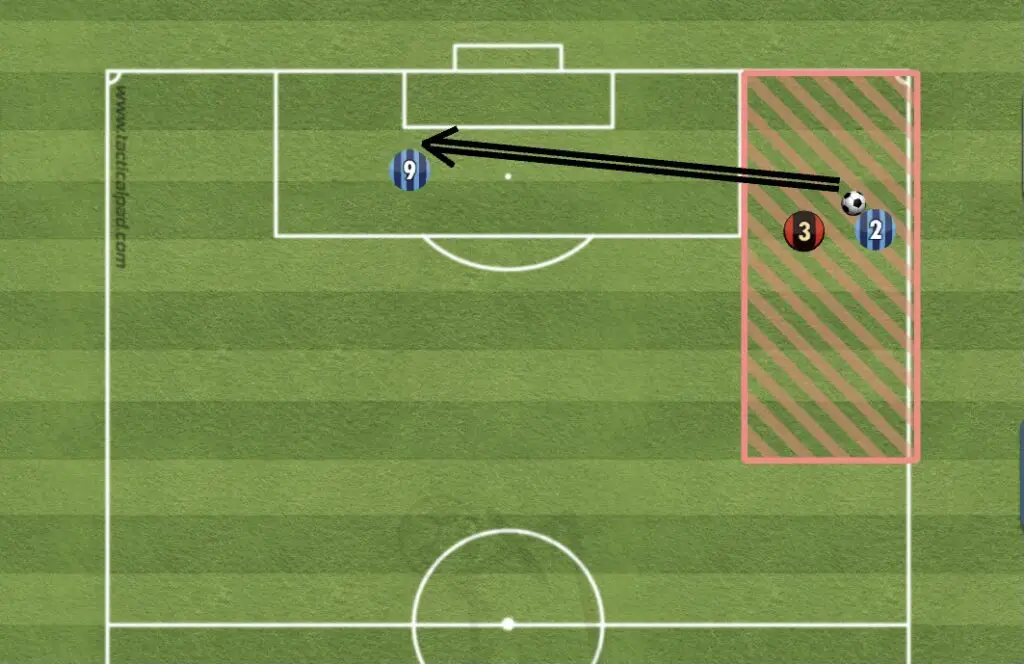
The chipped cross in football can be played by either cutting inside or outside.
The purpose of the cross is to try and get under the ball to float the ball into the box.
The chipped cross works best when there are numerous amount of players running into the box to attack the cross.
When the players are running to attack the cross their momentum will help generate the power of the shot.
If the player is trying to attack this cross they will find it harder to challenge for the ball.
Even if they win the ball they may struggle to get power on their shot.
When playing this type of cross in football you must be cautious of the keeper’s positioning.
This is because the ball will hang in the air and give the keeper more time to adjust and claim the ball.
Different types of Crosses in football | FAQ
What is an early cross in soccer?
An early cross in soccer is where a cross is played with a large amount of space between opposition defenders and the goalkeeper.
This typically occurs when a team is on a counter-attack and wants to quickly exploit space with a cross.
The player making the cross will look to take 1 – 2 touches max before getting their head up and crossing the ball.
What is a successful cross in soccer?
Statistically speaking, a successful cross in soccer is a cross that is played where a teammate wins the ball.
However, a successful cross in soccer will also be a cross that creates a goal-scoring opportunity
What do crosses mean in soccer?
A cross in soccer is a pass made from a wide area of the soccer pitch toward the opposition’s box.
The players who usually make the most crosses in a game of soccer will either be the winger, fullback or wingback depending on the soccer formation.
There are a variety of crosses that players can use to cross the ball to their teammates
What is a Rabona cross in soccer?
A Rabona in soccer is where a player will kick the ball with their kicking leg crossed over and behind their standing leg.
A Rabona cross in soccer is where the player crossing the ball will use this kicking technique to pass the ball from the wide area to a teammate in the opposition box.
Crossing in football | Last words
The 6 different types of crosses in soccer all serve their purpose.
As a player, it is your responsibility to decide what cross would be best for the situation.
Crossing in soccer is definitely a skill you should improve on, especially if you are a winger or fullback.
Some factors you may need to take into consideration would be:
- The attackers you playing with
- Which is your preferred crossing foot
- The position you are playing
- The amount of time and space you have.
These are my 10 favourite crossing and finishing drills I like to use with my players.
If you found this post helpful on the different types of crosses in football or know someone that would then please share it with them!
Thank you for reading and sharing,
Toby

